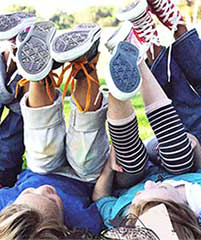Year 4 reading score low
 Experts say Australian nine-year-olds’ literacy is at a standstill.
Experts say Australian nine-year-olds’ literacy is at a standstill.
One in four Australian boys are struggling with reading by the time they reach year 4, according to an international test.
The study also found that the COVID-19 pandemic did not further worsen reading skills. The Progress in International Reading Literacy Study examined 400,000 students in 65 countries, including 5,500 students from 280 schools in Australia, to assess global literacy trends.
Compared to their peers in England, Hong Kong, and Singapore, Australian children showed significantly lower reading levels. However, they outperformed students in New Zealand.
The study found that 23 per cent of boys and 16 per cent of girls in Australia fall below the proficient standard, indicating difficulty in understanding and deriving meaning from written texts.
Girls outperform boys in 38 out of the 65 countries assessed.
Kylie Hillman, a senior research fellow with the Australian Council for Education Research, noted that while the 2021 test results can be seen positively due to reading abilities not declining during pandemic lockdowns, they can also be viewed pessimistically as students did not show improvement over the past five years.
Year 4, which corresponds to children aged 9-10, is a crucial stage as they transition from ‘learning to read’ to ‘reading to learn’. Students at an intermediate level should be able to identify explicitly stated actions, events, and emotions in texts.
The analysis revealed that children from affluent backgrounds perform better than those from disadvantaged families. Urban students also outperform their rural and regional counterparts.
Additionally, children growing up in homes with many books exhibited higher reading proficiency. Unsurprisingly, a fondness for reading was associated with better reading skills.
Education Minister Jason Clare acknowledged the report's findings and stressed the need for substantial reforms to address the gap between children from different socioeconomic backgrounds.
The study also highlighted the particularly poor outcomes for Indigenous children.








 Print
Print